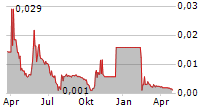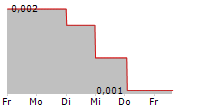
Press Release
The upcoming Phase 3 trial with ATO is more robust following a new post-hoc analysis.
Mont-Saint-Guibert, Belgium, July 18, 2024, 7.00 am CEST - BIOSENIC (Euronext Brussels and Paris: BIOS), the clinical-stage company specializing in serious autoimmune and inflammatory diseases therapy, today announced the final results of a new, detailed post-hoc analysis of the Company's previous Phase 2 clinical trial of ATO for the first-line curative treatment of cGvHD. The analysis will be used to determine the optimal posology of therapeutic oral ATO administration for BioSenic's upcoming clinical trial(s) and will be submitted for peer review prior to preparation of the necessary regulatory filings for trial approvals.
Medsenic's first phase 2 clinical trial, entitled "Treatment of Chronic Graft Versus Host Disease With Arsenic Trioxide (GvHD-ATO)", was conducted from 2016 to 2020 (ClinicalTrials.gov ID NCT02966301 - GMED16-001). Medsenic's global results were originally published in 2022 in the peer-reviewed journal Transplantation and Cellular Therapy under the title "High Response Rate and Corticosteroid Sparing with Arsenic Trioxide-Based First-Line Therapy in Chronic Graft-versus-Host Disease after Allogeneic Hematopoietic Stem Cell Transplantation". These results demonstrated that the first-line combination of ATO and corticosteroids (CS) with or without a calcineurin inhibitor (cyclosporine) is associated with a high clinical response rate and rapid CS sparing in moderate to severe cGVHD following allogeneic hematopoietic stem cell transplantation (HSCT), the current standard of care for several types of leukemia. The primary endpoint of the Phase 2 study was preliminary efficacy based on the overall response rate (ORR; complete response [CR] or partial response [PR]) at 6 months after 1 or 2 cycles of 4-week treatment. At 6 months, the ORR was 75.0%, with a CR rate of 35% and a PR rate of 40%.
BioSenic's new in-depth post-hoc clinical analysis of the Phase 2 clinical data now shows that in the group of patients who did not respond after first so-called induction cycle, more patients (20%) responded after a consolidation cycle of treatment. As a result, BioSenic will continue to use this 2-cycle, time-limited regimen. This will consist of a double four-week course. In addition, BioSenic has determined that an increase in the number of weekly injections over a four-week course could significantly increase the positive effect of the treatment on the biological and cellular parameters of the disease, consistent with a full effect of the drug at levels determined to be very safe for patients. BioSenic's goal is to finally select the best conditions for administering effective and safe doses of arsenic trioxide to achieve a convincing curative treatment of cGvHD, for which there is currently no alternative effective long-term therapy.
In the field of oncology, intravenous (IV) ATO has been accepted as a first-line treatment for acute promyelocytic leukemia (APL) since 2002, with demonstrated safety and long-term remissions. Until now, ATO in APL has been administered daily by IV infusion for up to or more than one hundred cumulative doses. IV administration requires hospitalization, is inconvenient for patients, results in reduced quality of life and is expensive. The anticipated introduction of an oral formulation of ATO in 2 cycles of four full weeks each, corresponding to an optimal dosing regimen, will significantly improve patient quality of life and compliance while reducing healthcare costs. This will be the next achievement in BioSenic's broader goal to contribute improved and potentially curative treatments for an autoimmune disease for which there are currently no satisfactory medical solutions.
François Rieger, PhD, Chairman and CEO, BioSenic said: "BioSenic's early preclinical and current clinical data show that the first-in-class modulatory properties of arsenic trioxide for immune cells differentiation and homeostatic maintenance of the immune system are much broader and deeper than previously anticipated. The systematic and renewed analysis of BioSenic's key clinical results in the treatment of cGvHD is providing additional insights into the optimization of its formulations, dosages and optimal treatment timing, in line with new basic research on the drug's mechanisms of action. We are now able to propose definitive conditions for the optimal use of arsenic trioxide for an upcoming pivotal Phase 3 trial of our ATO formulation for chronic Graft-versus-Host disease. "
About BioSenic
BioSenic is a leading biotech company specializing in the development of clinical assets issued from its Medsenic's arsenic trioxide (ATO) platform. Key target indications for the autoimmune platform include graft-versus-host-disease (GvHD), systemic lupus erythematosus (SLE), and now systemic sclerosis (SSc).
Following the merger in October 2022, BioSenic combined the strategic positionings and strengths of Medsenic and Bone Therapeutics. The merger specifically enables Medsenic/Biosenic to develop an entirely new arsenal of various anti-inflammatory and anti-autoimmune formulations using the immunomodulatory properties of ATO/oral ATO (OATO).
BioSenic is based in the Louvain-la-Neuve Science Park in Mont-Saint-Guibert, Belgium. Further information is available at http://www.biosenic.com.
About the main Medsenic/BioSenic technology platform
The ATO platform provides derived active products with immunomodulatory properties and fundamental effects on the activated cells of the immune system. One direct application is its use in onco-immunology to treat GvHD (Graft-versus-Host Disease) in its chronic, established stage. cGvHD is one of the most common and clinically significant complications affecting long-term survival of allogeneic hematopoietic stem cell transplantation (allo-HSCT).
Medsenic has been successful in a phase 2 trial with its intravenous formulation, Arscimed®, which has orphan drug designation status by FDA and EMA. The company is heading towards an international phase 3 confirmatory study, with its new, IP-protected, OATO formulation. Another selected target is moderate-to-severe forms of systemic lupus erythematosus (SLE), using the same oral formulation. ATO has shown good safety and significant clinical efficacy on several affected organs (skin, mucosae, and the gastrointestinal tract). Systemic sclerosis is now full part of the clinical pipeline of Medsenic/BioSenic. This serious chronic disease badly affects skin, lungs, or vascularization, and has no current effective treatment. Preclinical studies on pertinent animal models are positive, giving good grounds to launch a phase 2 clinical protocol, using new immunomodulatory formulations of APIs recognized to be active on the immune system.
The company is currently focusing its present R&D and clinical activities on a selective, accelerated development of its autoimmune platform.
Note: The allogeneic cell therapy platform-originating from the previous listed company Bone Therapeutics company, may be of renewed interest by using isolated and purified differentiated bone marrow Mesenchymal Stromal Cells (MSCs) as a starting material for further isolation of passive or active biological subcellular elements. Indeed, these cells may provide new subcellular vesicles potentially able to deliver a unique and proprietary approach to organ repair. BioSenic is now involved in determining new patentable approaches in this complex area of cell therapy.
For further information, please contact:
BioSenic SA
François Rieger, PhD, CEO
Tel: +33 (0)671 73 31 59
investorrelations@biosenic.com
Certain statements, beliefs and opinions in this press release are forward-looking, which reflect the company or, as appropriate, the company directors' current expectations and projections about future events. By their nature, forward-looking statements involve a number of risks, uncertainties and assumptions that could cause actual results or events to differ materially from those expressed or implied by the forward-looking statements. These risks, uncertainties and assumptions could adversely affect the outcome and financial effects of the plans and events described herein. A multitude of factors including, but not limited to, changes in demand, competition and technology, can cause actual events, performance or results to differ significantly from any anticipated development. Forward looking statements contained in this press release regarding past trends or activities should not be taken as a representation that such trends or activities will continue in the future. As a result, the company expressly disclaims any obligation or undertaking to release any update or revisions to any forward-looking statements in this press release as a result of any change in expectations or any change in events, conditions, assumptions or circumstances on which these forward-looking statements are based. Neither the company nor its advisers or representatives nor any of its subsidiary undertakings or any such person's officers or employees guarantees that the assumptions underlying such forward-looking statements are free from errors nor does either accept any responsibility for the future accuracy of the forward-looking statements contained in this press release or the actual occurrence of the forecasted developments. You should not place undue reliance on forward-looking statements, which speak only as of the date of this press release.



